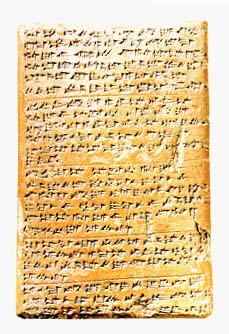Image Details

Bildarchiv Preussischer Kulturbesitz, Vonderasiatisches Museum
In 1887, a peasant accidentally discovered the clay tablet, along with 350 other letters belonging to pharaoh Akhenaten and his father, at el-Amarna, in Egypt. Six of the Amarna tablets specifically mention a place called Urusalim, or Jerusalem. Although Margreet Steiner argues that Urusalim was merely an Egyptian estate, and ‘Abdi-H
According to Na’aman, the scarcity of archaeological remains from 14th-century B.C.E. Jerusalem does not mean that the city did not exist at that time.
